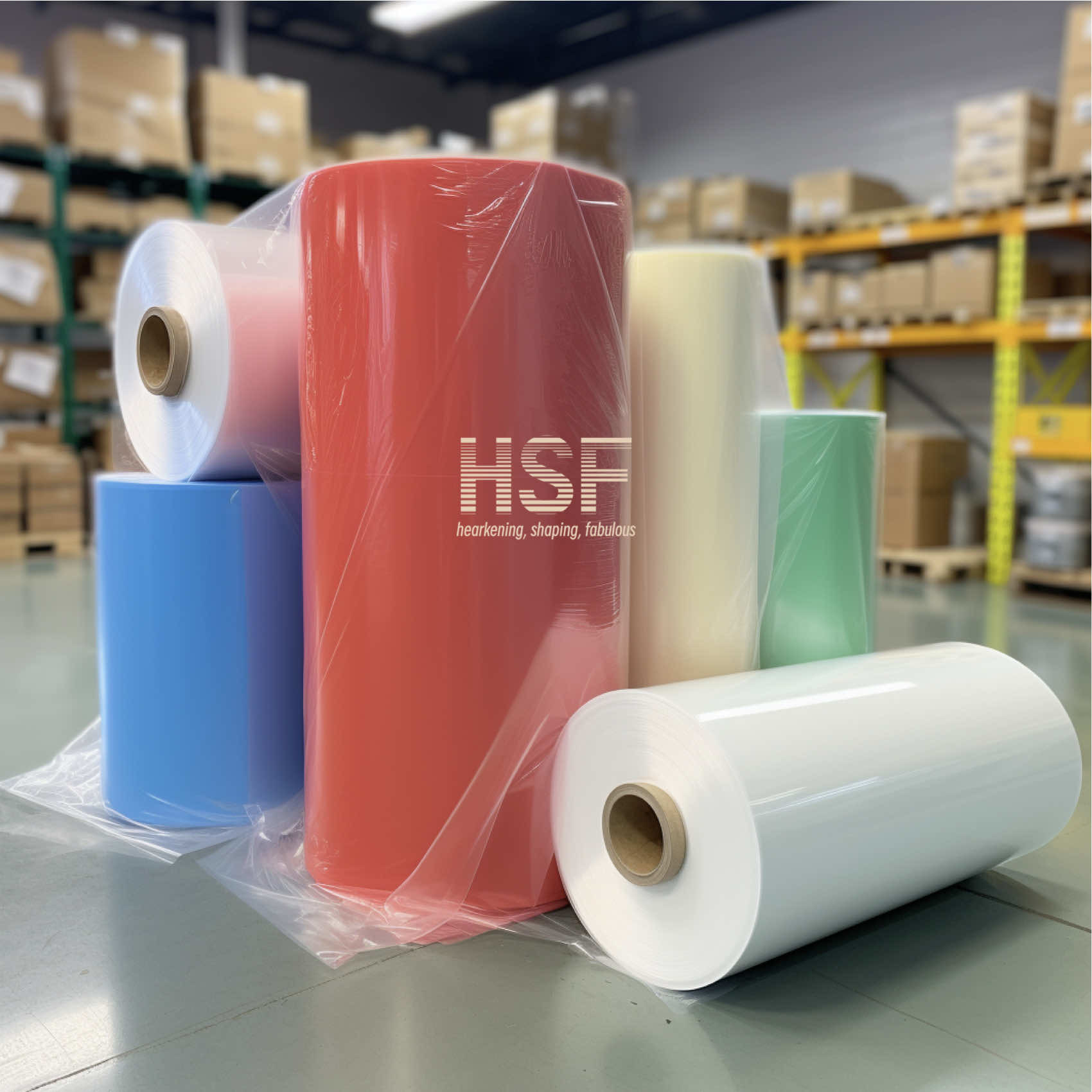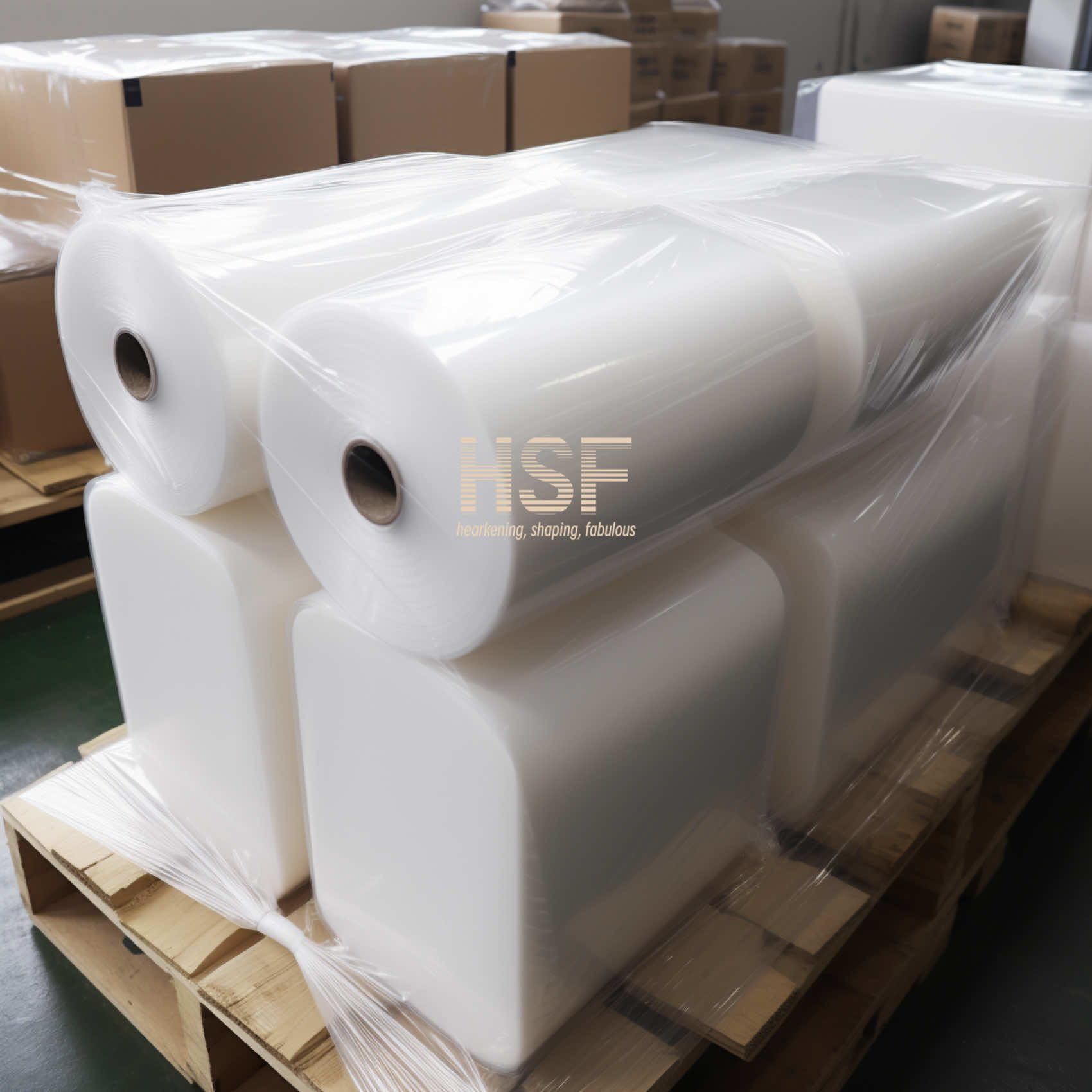Shanghai HSF Materials Technology Co., Ltd. |
|
Verified Suppliers
|
|
Opaque white 120 μm HDPE film for backing liner for different tapes, printings and packaging
High-Density Polyethylene (HDPE) film is a versatile packaging
material that has numerous applications across different
industries.
The 120-micron opaque white HDPE film is thicker than the standard
HDPE films and has enhanced strength and durability properties.
Here are some of the primary application scenarios of the 120-micron opaque white HDPE film:
1. Construction and Building Materials:
The 120-micron opaque white HDPE film is suitable for
use as a protective sheet for surfaces such as concrete or a curing
blanket.
The extra thickness of the film makes it more robust,
ensuring that it can withstand rough handling and other external
factors.
2. Industrial Products Packaging:
HDPE film is commonly used to package industrial
products that require extra protection from scratches, moisture or
contamination.
The 120-micron thickness of the film offers better
strength and resilience, ensuring that packaged products remain
safe and intact
during handling and shipping.
3. Transportation and Shipping:
The 120-micron opaque white HDPE film is ideal for
use as a pallet wrap or cover in transportation and shipping.
The extra thickness assures that packed products
remain immobilized, with minimal shifting or falling during
transport.
4. Agriculture and Horticulture:
HDPE films are light in weight, easily customizable,
and have excellent water and chemical resistance properties,
making them suitable for use in agriculture and
horticulture. 120-micron opaque white HDPE film has been used
as greenhouse covers, mulches, and agriculture films,
which protect plants from pests, rain, and sunlight.
5. Food Processing:
HDPE film is frequently used in the food industry to
package meat, poultry, or fish products safely.
The 120-micron opaque white HDPE film's enhanced
thickness provides an additional layer of protection against
contamination,
heat, or moisture.
In summary, the extra thickness and strength of the 120-micron
opaque white HDPE film make it an ideal choice for packaging and
protecting products in various industries. It is a versatile
material that can be used to accomplish numerous tasks requiring
water or
chemical resistance, durability, and strength.
The opaque white 120 micron HDPE film has several strong points that make it an ideal choice for various industrial and
commercial applications. Here are some of the major benefits of
this film:
1. Superior Strength and Durability:
The 120-micron thickness of the HDPE film makes it
stronger and more resistant to punctures and tearing than other
thin film materials.
This thickness helps to protect the packaged goods
from damage caused by external factors during transportation and
storage.
2. Water and Moisture Resistance:
HDPE film has excellent water and moisture resistance
properties. The film's opacity also protects the packaged goods
from the
damaging effect of UV radiation that could result in
material degradation.
3. Cost-effective:
HDPE film is a cost-effective packaging solution
compared to other materials, which require higher production costs,
such as metal or glass.
The 120-micron thickness reduces material
utilization, which translates into material savings and lower
packaging costs.
4. Versatility:
The opaque white 120 micron HDPE film comes in rolls
of varying lengths and widths, and can thus be customized to suit
different packaging
requirements. This versatility makes it ideal for
wrapping and protecting goods of different sizes, shapes, and
weights.
5. Recyclability:
HDPE film is recyclable and environmentally friendly.
The film's high density makes it easy to recycle into other items,
making it the best type of plastic for recycling.
| 1 | Appearance | No air bubbles / stains / breakage / impurities | Measured data (Ref.) | |
| 2 | Size | Width (mm) | 1200 ± 5 | 1200 |
| Thickness (mm) | 0.120 ± 8% | 0.123 | ||
| 3 | Color difference | Colorimeter △E | < 3 | ok |
| 4 | Tensile Strength (Mpa) | TD | ≥ 15 | 19 |
| MD | ≥ 15 | 28 | ||
| 5 | Elongation @ break (%) | TD | ≥ 230 | 863 |
| MD | ≥ 230 | 939 | ||
| 6 | Surface Tension (Corona treatment) | Dyne Value | ≥42 dyne | 49 |
| 7 | Splice No. | ≤1 | - | |
There are several technical methods that can be adopted for
modifying high-density polyethylene (HDPE) films
to improve their properties, such as:
1. Additives Incorporation:
Various additives can be incorporated into the HDPE film to modify
its properties, such as:
- UV Stabilizers:
These can be added to the HDPE film to make it resistant to
ultraviolet radiation, increasing its outdoor durability.
- Slip Agents:
These additives help HDPE films to glide smoothly over each other,
reducing friction between them,
and making packaging and handling easier.
- Antistatic Agents:
Additions of antistatic agents can reduce static charges that may
build up in an HDPE film, making the film suitable for
packaging electronic parts.
- Flame Retardants: These additives can be added to HDPE films to
reduce the flammability of the film,
making it safer to use in fire-prone applications.
2. Coating:
Coating can be applied to the surface of the HDPE film to improve
specific properties, such as:
- Barrier Coatings:
Coatings can be applied to the HDPE film to improve its barrier
properties, making it resistant to moisture, oxygen,
carbon dioxide, and other gases.
- Scratch-Resistant Coatings:
Coatings can help improve the scratch resistance of HDPE films,
making them more durable.
3. Blending:
Blending is the process of mixing HDPE resin with other polymers or
fillers to obtain different characteristics. For example:
- Low-Density Polyethylene(LDPE) or Polypropylene(PP) Blending:
Blending HDPE with LDPE or PP improves the flexibility
of HDPE films, making them suitable for packaging applications.
- Filler Blending:
Mixing HDPE resin with fillers can improve the film's stiffness,
making it suitable for packaging products that require more
stability.
Overall, various technical methods, such as additives
incorporation, coating, and blending, can be used to modify HDPE
films to
improve specific properties, making them useful for diverse
packaging and industrial applications.

